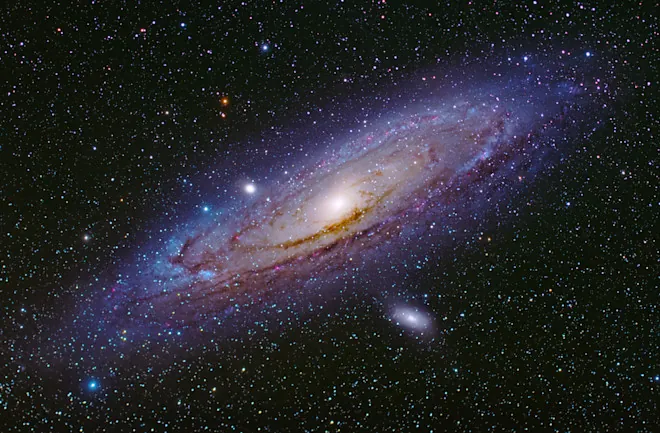
Unlocking the Secrets of Giant Planet Discovery Through Gaia Astrometry
2024-11-17
Author: Ming
Introduction
Astrometric observations collected by the Gaia spacecraft are set to usher in a new era in the search for exoplanets, particularly giant planets. The latest data from Gaia's third data release (DR3) has made it possible to detect planetary companions with orbital periods ranging from less than a year to over four years. Unlike traditional radial velocity methods, which are limited by the orbital inclinations of planets, Gaia astrometry offers greater flexibility in identifying possible planetary companions.
Key Metrics in Astrometric Detection
One key aspect of this research is the renormalised unit weight error (RUWE), a metric that helps researchers assess how the presence of a companion affects the primary star's measurements. By utilizing this value alongside fitted astrometric tracks from Gaia, scientists employ Bayesian inference techniques to accurately estimate the mass and orbital characteristics of companions within known stellar systems. For instance, by integrating these astrometric data with radial velocity measurements, researchers discovered that HD 66141 b may represent a brown dwarf, with a maximum mass estimated at around 23.9+7.2–6.4 times the mass of Jupiter.
Future Prospects
Future applications of this method are also promising, particularly with directly imaged planets. Taking β-Pictoris c as a case study, researchers note the challenge posed by the host star's brightness and activity, which complicates data interpretation. However, the subsequent data releases from Gaia, particularly those incorporating epoch astrometry, are anticipated to accurately refine our understanding of planetary orbits based solely on astrometric data, potentially transforming exoplanet exploration.
Correlating Mass Predictions
Furthermore, by correlating predicted observational limits on planetary mass with theoretical models, scientists can gauge the likelihood that stars with given RUWE values will host detectable planets. This valuable information will significantly enhance the planning and efficiency of future astronomical surveys.
Conclusion
In conclusion, the ongoing advancements and data streams from Gaia promise to dramatically reshape our strategies for identifying and characterizing giant planets, bringing us one step closer to understanding the vast and exciting landscape of our universe. Keep your eyes on the stars—exciting discoveries are on the horizon!


 Brasil (PT)
Brasil (PT)
 Canada (EN)
Canada (EN)
 Chile (ES)
Chile (ES)
 Česko (CS)
Česko (CS)
 대한민국 (KO)
대한민국 (KO)
 España (ES)
España (ES)
 France (FR)
France (FR)
 Hong Kong (EN)
Hong Kong (EN)
 Italia (IT)
Italia (IT)
 日本 (JA)
日本 (JA)
 Magyarország (HU)
Magyarország (HU)
 Norge (NO)
Norge (NO)
 Polska (PL)
Polska (PL)
 Schweiz (DE)
Schweiz (DE)
 Singapore (EN)
Singapore (EN)
 Sverige (SV)
Sverige (SV)
 Suomi (FI)
Suomi (FI)
 Türkiye (TR)
Türkiye (TR)
 الإمارات العربية المتحدة (AR)
الإمارات العربية المتحدة (AR)